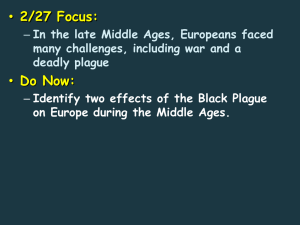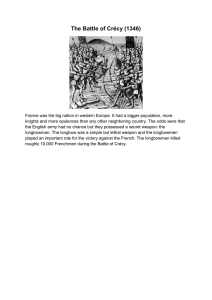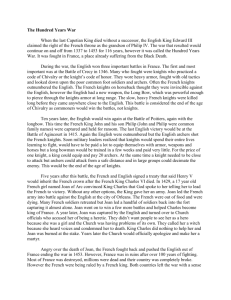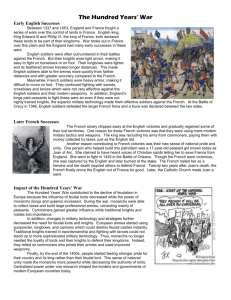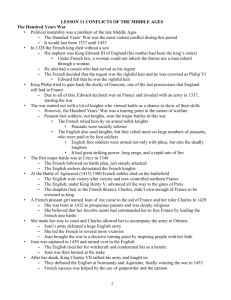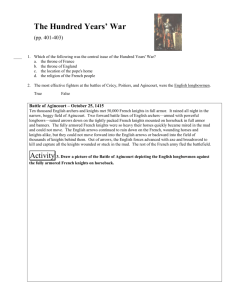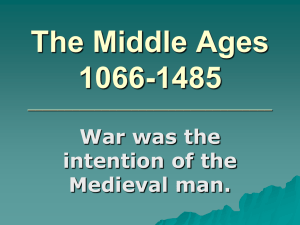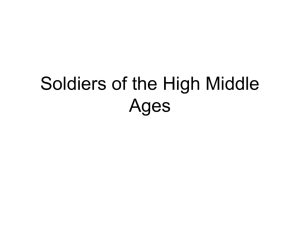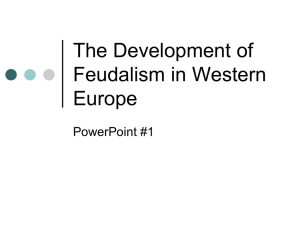5.4 Reading
advertisement
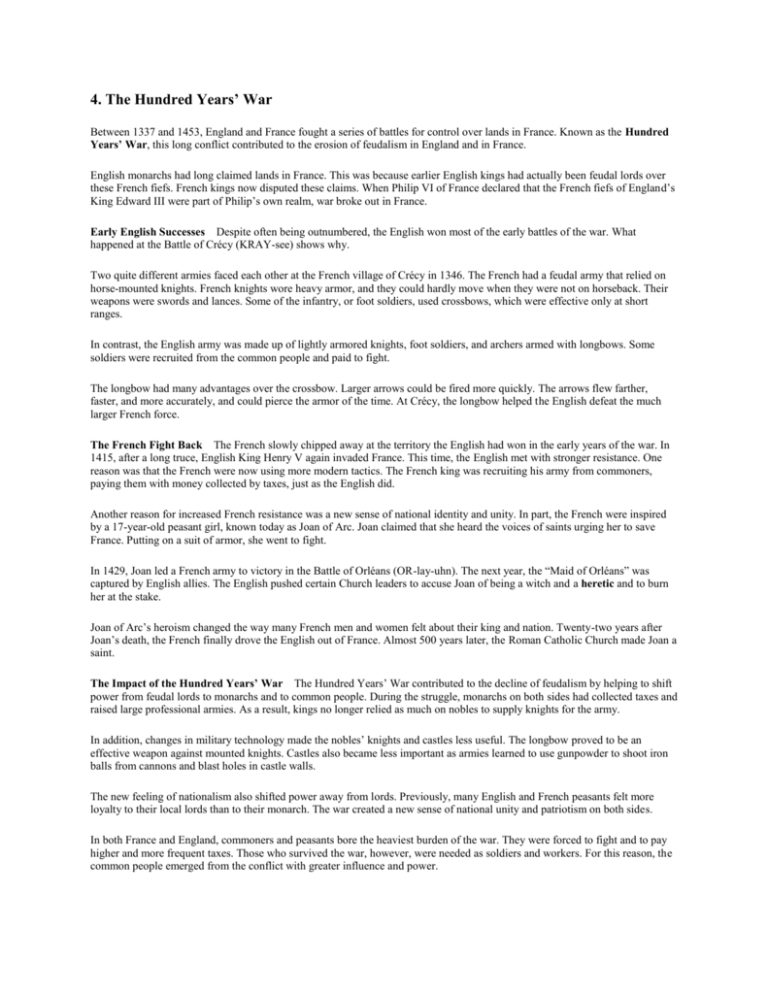
4. The Hundred Years’ War Between 1337 and 1453, England and France fought a series of battles for control over lands in France. Known as the Hundred Years’ War, this long conflict contributed to the erosion of feudalism in England and in France. English monarchs had long claimed lands in France. This was because earlier English kings had actually been feudal lords over these French fiefs. French kings now disputed these claims. When Philip VI of France declared that the French fiefs of England’s King Edward III were part of Philip’s own realm, war broke out in France. Early English Successes Despite often being outnumbered, the English won most of the early battles of the war. What happened at the Battle of Crécy (KRAY-see) shows why. Two quite different armies faced each other at the French village of Crécy in 1346. The French had a feudal army that relied on horse-mounted knights. French knights wore heavy armor, and they could hardly move when they were not on horseback. Their weapons were swords and lances. Some of the infantry, or foot soldiers, used crossbows, which were effective only at short ranges. In contrast, the English army was made up of lightly armored knights, foot soldiers, and archers armed with longbows. Some soldiers were recruited from the common people and paid to fight. The longbow had many advantages over the crossbow. Larger arrows could be fired more quickly. The arrows flew farther, faster, and more accurately, and could pierce the armor of the time. At Crécy, the longbow helped the English defeat the much larger French force. The French Fight Back The French slowly chipped away at the territory the English had won in the early years of the war. In 1415, after a long truce, English King Henry V again invaded France. This time, the English met with stronger resistance. One reason was that the French were now using more modern tactics. The French king was recruiting his army from commoners, paying them with money collected by taxes, just as the English did. Another reason for increased French resistance was a new sense of national identity and unity. In part, the French were inspired by a 17-year-old peasant girl, known today as Joan of Arc. Joan claimed that she heard the voices of saints urging her to save France. Putting on a suit of armor, she went to fight. In 1429, Joan led a French army to victory in the Battle of Orléans (OR-lay-uhn). The next year, the “Maid of Orléans” was captured by English allies. The English pushed certain Church leaders to accuse Joan of being a witch and a heretic and to burn her at the stake. Joan of Arc’s heroism changed the way many French men and women felt about their king and nation. Twenty-two years after Joan’s death, the French finally drove the English out of France. Almost 500 years later, the Roman Catholic Church made Joan a saint. The Impact of the Hundred Years’ War The Hundred Years’ War contributed to the decline of feudalism by helping to shift power from feudal lords to monarchs and to common people. During the struggle, monarchs on both sides had collected taxes and raised large professional armies. As a result, kings no longer relied as much on nobles to supply knights for the army. In addition, changes in military technology made the nobles’ knights and castles less useful. The longbow proved to be an effective weapon against mounted knights. Castles also became less important as armies learned to use gunpowder to shoot iron balls from cannons and blast holes in castle walls. The new feeling of nationalism also shifted power away from lords. Previously, many English and French peasants felt more loyalty to their local lords than to their monarch. The war created a new sense of national unity and patriotism on both sides. In both France and England, commoners and peasants bore the heaviest burden of the war. They were forced to fight and to pay higher and more frequent taxes. Those who survived the war, however, were needed as soldiers and workers. For this reason, the common people emerged from the conflict with greater influence and power.
